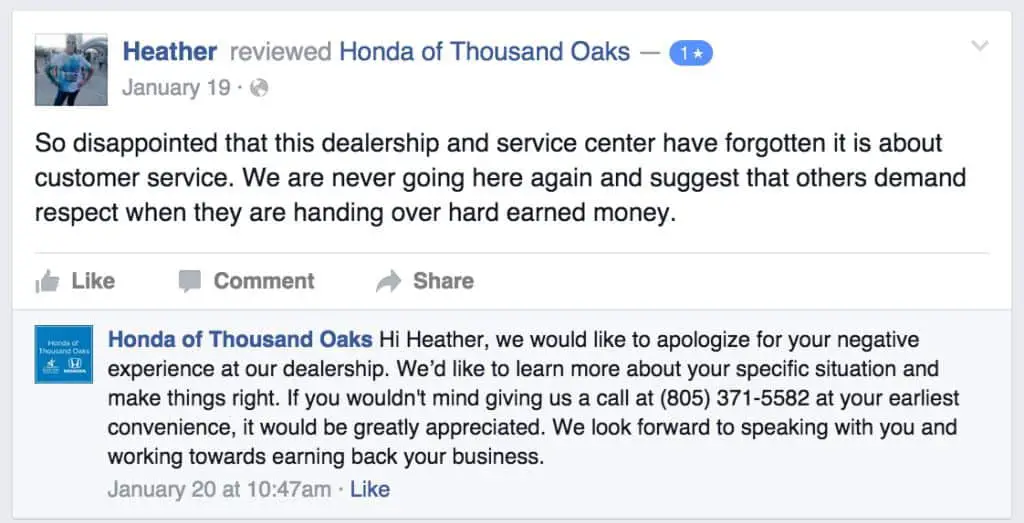7 Tips To Deal With Negative Comments On Social Media: Nonprofit Guide
Disclaimer: This post may contain affiliate links. These links, if used and purchases made, we may earn a small commission. These affiliate programs do not impact the recommendations we make or the resources we refer you to. Our focus is on providing you the best resources for your nonprofit journey.
According to a 2020 survey by Khoros, how organizations respond to negative comments on social media can grow a loyal following or tarnish an organization’s name, even when trying to do good.In fact, 75% of Twitter users, 59% of Facebook users, and 34% of Instagram users have used the platform to engage with brands, according to the survey.
Over half of those concerns used a social media platform to express customer care concerns and expect responsiveness and resolution.
Below we share our 7 top tips for responding to negative comments on social media when it is directed at your organization. These tips can help turn a negative comment into a loyal constituent when done well.
Let’s dig in.
Check Yourself
The first step in responding to negative social media comments is to not take the comments personally. This means finding the place where you are un-offendable individually. This allows you to respond based on the true merits of the comment.
When reading comments, read the words, but stay out of the trap of reading emotion into those words.
For example, let’s take the fictitious case of Twitter follower @MyNPCrowdClientExample who made the following tweet:
“What does it take to get my appointment scheduled correctly? This is the second time I’ve scheduled only to arrive and be told I did not have an appointment. This is not how to treat clients. #customerexperiencenightmares”
When you read the comment above, did you hear the inflection in the author’s voice? Did you hear an angry, loud, yelling voice? Was it a fast-paced, rapid fire-spewing of the tongue? If you did, you are reading emotion into the comment. Doing so immediately puts us into a defensive posture.
Now, take a deep breath and read it again. This time read it in a monotone voice, no inflection, without emotion. Just read the words in order to understand each sentence.
The second time you read it, do you see the specific issue being called out? In this case, there is a problem that this client is having with scheduling. Now you have something to work with and can respond without being defensive.

Don’t Respond In-Kind. Stay Above The Fray
A wise man once said, “Never wrestle with a pig. You both get dirty and the pig likes it.”
Although this proverb might not be 100% accurate, it still has some merit.
If you’re dealing with someone who’s constantly throwing mud at you, don’t respond in kind. If you do, you’ll be in an endless cycle of mud-throwing that can go on for days or longer.
It can also paint you as the organization in a bad light.
Instead, stay above the fray by staying calm and collected when responding to their attacks against you or your organization.
Stick to the facts, show empathy when needed.
You’ll soon realize that they’re no match for your composure and intelligence. And they’ll soon stop coming after you altogether because they know that they’re not going to get the reaction that they want from you.
Communicate Privately and Directly
When a complaint online cannot be resolved in one or two responses, it’s time to take it from a public forum to a private one.
A long banter back and forth in a public setting may lead to responses that seem petty, defensive, or even argumentative.
If on Twitter, go the DM (Direct Message) route. On Facebook use messenger for more real-time interaction. You can even resort to email if needed.
Just remember, even though you are not discussing it publicly using these channels, anything and everything you say can and may be posted to the public if the constituent or detractor is not satisfied with the response.
Don’t Delete Or Ignore Negative Comments
Receiving negative comments on social media that feel baseless might leave you thinking about deleting the review, or responding in a negative way. Don’t!
Deleting a negative review or comment is a quick and easy way to build a poor reputation online.
When you remove derogatory comments, it can spin quickly into a storyline that your organization is not being honest or truthful.

Don’t Wait. Respond Quickly
About half of consumers expect brands to respond to their inquiries on social media in 3 hours or less.
Notice I said respond, not resolve. Simply initiating a response within 3 hours meets the expectations of over half of consumers on social media.
Even a quick response to let the person know you’re looking into it is better than spending 2 days getting the right answer but not responding sooner.
Give it a simple “Hey @JoeSmith. That’s sucks. Don’t fret, we got you. We’re looking into this and will get back to you as soon as we have some info on it.”
Exceed Their Expectations By Going Above And Beyond
When a constituent, donor, or client has a problem and voices it online, they are usually doing so because they are desperate for a response.
What if you could exceed their expectations? You might turn a negative experience into a loyal advocate for your organization.
Empower your team to not only solve issues but to do it in a way that just blows the other person away.
It doesn’t have to be expensive. Here are a few ideas:
Scheduling/Booking Issue: Contact them directly to reschedule. Find out their favorite candy or drink and have it waiting for them when they arrive for their appointment.
Missing Donation Receipt: Immediately get them that receipt via email or text message. Follow-up with a paper copy of the receipt, a handwritten note, and maybe branded pen. They can think of you when they are writing a check.
Multiple Unanswered Requests: They’ve tried contacting your organization but have not received a follow-up. If they are local to you, schedule a 30-minute coffee with them. Contact them and get them the info they request. Then, wait a few weeks and contact them again to see how they are doing and if they need anything else. (Proactive follow-up)
Poor Experience: Bummer! Hear them out and be sure to ask “What would need to be true for your next encounter to be a 10?” Find something in the answer that you can act on for the next interaction. Send them a candid picture of staff. We are all humans after all.
Be Open, Transparent, and Genuine
It’s easy to miss what the real issue is when people post short rants online. Take a few minutes and really read what was said. Is there any truth in the comment? Did someone on the team drop the ball? Did something promised not get delivered?
If a mistake was made, it’s time to acknowledge the issue and begin to address the root cause of the problem.
When you admit to a failure and what you are going to resolve it, publicly, you are setting the tone that your organization is “human”. Mistakes are made from time to time and that’s real.
Use appropriate humor, not sarcasm, to help diffuse the situation. Sometimes that humor is self-deprecating, but it can work.

BONUS TIP – Do NOT repeat yourself!
There are a bunch of social media automation tools in the market. But don’t make the mistake of setting up rules that auto-reply to every tweet with a negative sentiment “Sorry to hear that. DM us your account # and we’ll look into it”.
When someone is looking at your organization’s activity, nothing says “You’re just a number” than scrolling through a list of the same response to most inquiries. Just look at Suddenlink.

Keep every reply as specific to the user as possible. Sure, you might need to ask for an account number but make it as personal as possible. Then, follow through.
Another caution is that when the dialogue online goes back and forth a few times, refrain from saying the same thing the same way. If you need to repeat something, say it differently so that the other person might understand it differently than the first time.
Summary
It is inevitable. Your organization is going to receive negative comments and sentiment online at some point. When it starts, it is important to know some rules on how, and how not, to handle the situation.
When responding, the first few hours matter, so respond quickly. Be positive and upbeat, refraining from matching the negative commenter’s tone and intensity.
Use humor at appropriate times to help defuse the situation and to bring attention to the fact that human error does happen, but you’ll make it right!
Reading the tips in this article will have you prepared to respond well.







